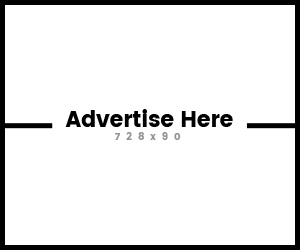
A very common type of wooden ceiling is a coffered ceiling - wooden beams in a pattern with wooden panels between them. This is a good look and works great in the vaulted ceiling or the ceiling of the cathedral.
Perhaps you have popcorn on a flat ceiling or a gypsum ceiling, and this is just not quite for you. Wood paneling is a good way to cover it, avoiding the extra work of removing it before applying a new trim to the ceiling.
If your room is rectangular, you can use a side board or wooden planks, driving beads or grooves in a shorter direction. This will create the illusion that the room is more like a square than a rectangle. Another option is to use parquet floors in the same way.
A wooden frame look will look more rustic (or rustic), and it is much cheaper and easier to achieve than covering the entire ceiling with wood panels or planks. It includes the installation of the beams in the intersection pattern to create “boxes” through the ceiling of the room.
Solid wood ceilings can be installed in the form of glue panels and grooves or in the form of boards. Any wooden ceiling can be painted in the desired color and brings an individual approach to the room.
Plywood from plywood - This product comes in the form of sheets (usually 4 pieces) and can be purchased with a thickness of 3/4 inch or 1/2 inch. When working on the ceiling, weight is a problem. Thus, you can consider the panel 1/2 ".
Wood veneers usually have a thin sheet (1/32 inch thick) MDF core of wood on the finished side.
You have the ability to paint or paint wood panels. Solid woods and wood veneers look best painted or sealed. This creates a more natural look, while at the same time making the panel more eye-catching and more prominent.
If you decide to draw, you can use MDF panels. They are much cheaper, but not painted. MDF and HDF are usually supplied pre-primed and can only be painted.
Wood panels provide many design options. Complete the installation by framing the ceiling with decorative roof casting or creating ceiling structures with panel moldings.
For a classic cottage in New England, you cannot beat the ceiling with panels. The panels can be purchased with a thickness of 1/4 "and 1/8", which can be bent, making them suitable for vaulted or curved ceilings.
Georgia-Pacific makes a product called Ply-Bead that mimics an old-fashioned sideboard. It comes with a thickness of 19/32 inches and a thickness of 11/32 inches. Suitable for both sloping and flat ceilings, 4-inch and 8-inch sheet piles have pine veneer veneer, which is filled to look like a side board.
Panels have two patterns. Use a thinner, 1.6-inch central ball to visually enlarge smaller areas and a wider 3.5-inch spacing to visually reduce an area that is too large. To finish off the edge of the bead ceiling, try combining it with traditional roofing or cantilever casting. Ply-Bead costs from $ 16 to $ 20 per sheet.
Panels that can be cut with a saw or saw should be screwed to the ceiling beams. You should also use construction or panel glue. (As stated in the trade - "glued and screwed").
Due to the size of the panels, it is best to have an assistant during installation. Opaque stains and acrylic latex paints on top of the primer can be used to achieve any number of looks. The stain allows you to see the wood grain, but the paint is more durable.
Try to imagine off-white moldings surrounding the crimson panels. The combinations are endless.
If the sheet sheathing is a bit complicated, there are natural wood options suitable for a wooden ceiling in any logging yard. Look at the edges of the tongue and grooves that are beveled to form a V-shaped groove. This skin is mounted on board with glue and a blind nail.
If you want wood paneling to look but not enjoy the load capacity of sawn timber, think of fiber boards, which in their composition resemble acoustic tiles, but do not require a suspended grid. A good example is the new classic Armstrong boards.
These 48 "long x 6" wide boards weigh only 21 oz. each, making installation easy, work for one person. Laminated boards are easy to install and can be attached directly to drywall or plaster with glue or paper clips.
The cost of about 1.25 dollars per square foot, carton packaging is 40 square meters. Feet There are no visible seams or grid lines on the ceiling surface. If Country Classic Planks does not suit your space, you can look at the heritage boards. They are scored in the middle to get the look of narrow 3-inch boards.
There is enough choice to suit your taste and your budget. The most important step is to decide what you really want before you get started. Enjoy it.



